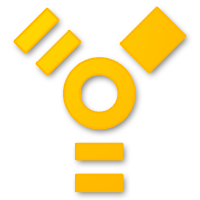|
Size: 1635
Comment:
|
Size: 1653
Comment:
|
| Deletions are marked like this. | Additions are marked like this. |
| Line 1: | Line 1: |
| FireWire and Firewire page combined |
|
| Line 10: | Line 8: |
| == Features of !FireWire == | == Features of FireWire == |
| Line 25: | Line 23: |
| == Advantages of !FireWire == | == Advantages of FireWire == |
| Line 31: | Line 29: |
== Comparison with UniversalSerialBus == * !FireWire |
|
Introduction
FireWire or IEEE1394 was developed in 90s by Apple to provide high-speed communications.
FireWire is available as wireless, fiber optic and coaxial versions, all using the same protocol. The technology is a peer-to-peer standard, that means that every connected device can be a host or client. Firewire can connect up to 63 devices.
Features of FireWire
- Peer-to-Peer networking allowing up to 63 devices to be connected per bus
- non-cyclic network
- automatic address selection
- no terminators needed in opposition of SCSI
- locations are random
- non-cyclic network
- Half-duplex 98.304 Mbps 1394a supports 2x (196.608) and 4× (393.216)
- 1394b provides full duplex 98.304 Mbps on 1x 2x 4x 8x 16x 32x
- Data encoding
1394b uses improvement of FibreChannel's 8b10b encoding
- Support for Direct Memory Access (DMA)
- Data-Strobe encoding providing less jitter than normal clock-data
- Like USB, backwards compatible
- Isochronous which means that between cycles are equal time intervals
Advantages of FireWire
- hot pluggable (support by udev)
- outstanding performance
- True data rates where USB normally only provided half the theoretical rate
- direct map to processor
Direct Memory Access for FireWire equipment
Comparison with UniversalSerialBus
FireWire
